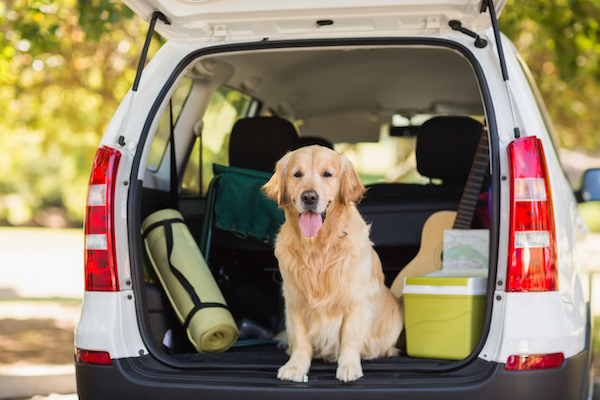If you’re staying that little bit closer to home on your pet-friendly getaway, it’s likely you’ll be travelling by car. While some pets love travelling by car, others get a little stressed, or even green around the gills.
Here’s our best advice on navigating car travel with fur-babies in tow.
THE LEGALITIES:
Not only is your pet’s safety of paramount importance, irresponsible car travel with a pet can hinder your capacity to control your vehicle and may even land you in hot water with the law.
The Roads and Maritime Services (RMS) advises that police can fine a driver and issue demerit points if an animal is causing the driver to be not in full control of the vehicle, or if they are driving with a dog on their lap. Demerit points and fines vary slightly across states and territories, so for exact guidelines, please contact your relevant transport department.
- Australian Capital Territory – Transport for Canberra
- New South Wales – Roads and Maritime Services
- Northern Territory – Department of Transport
- Queensland – Department of Transport and Main Roads
- South Australia – My Licence SA
- Tasmania – Department of State Growth, Transport
- Victoria – VicRoads
- Western Australia – Department of Transport
The RSPCA can also issue fines under The Prevention of Cruelty to Animals Act. If an animal is injured because it was unrestrained, owners face up to six months’ jail and fines of up to $5,500.
WHAT NOT TO DO:
Australian laws introduced in 2013 prohibit a pet from being in the driver’s area of a vehicle or seated on the driver’s lap. This is dangerous for a number of reasons – pets may obscure a driver’s vision, inhibit their capacity to steer or even jump near a driver’s feet, making braking and accelerating extremely difficult.
RSPCA statistics reveal about 5000 dogs each year are injured or killed in Australia as a result of falling from a moving vehicle. For this reason it is essential that a pet should always be seated/housed in the appropriate area of the vehicle. A restrained animal will reduce driver distraction and in the event of a crash, it will be less likely to become airborne. This not only reduces this risk of injury to your pet, but to others riding in the vehicle.
CHOOSING A RESTRAINT:
What kind of restraint or container you use will depend on your pet’s size, preference and your vehicle specifications. Options include travelling crates and containers, a well-fitted harness which links your pet to the seat belt system, or a seat-belt attachment. It’s advised that a seat-belt attachment be used with a harness, rather than attached to your pet’s collar. You can also purchase hammock seat covers which prevent a pet from climbing into the front seat of your car.
If using a pet crate or container, ensure it provides ample room for a pet to stand up and lie down comfortably. It should also be fitted with a secure drinking cup for guaranteed hydration and a water-proof, odour minimising mat. You must also secure the crate/container appropriately, as this can become a dangerous projectile in the event of a crash.
EXTRA SAFETY CONSIDERATIONS:
While a dog may ride in the passenger seat if secured, consider the ramifications of a quickly inflating airbag – the intensity and force with which they are deployed on impact is enough to severely or fatally wound your animal. If driving a ute, a dog just be restrained via a tether or cage. Failure to do so will cost you a $500 fine from the RSPCA, because this misstep places your pet in severe danger if they fall off or become injured while the vehicle is moving.
You should also prevent dogs from riding with their heads out the window, as this can put them at risk of windblown debris becoming lodged in their eyes, and forces air to rush into their lungs at high-speed.

